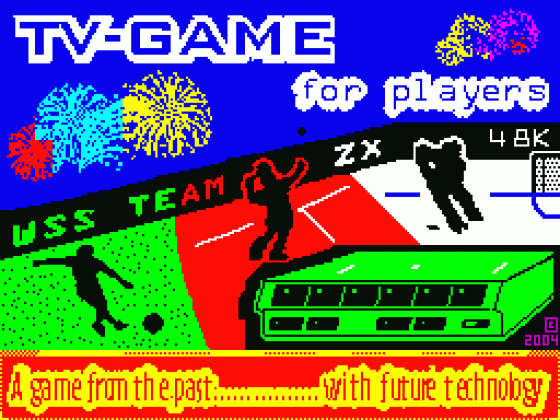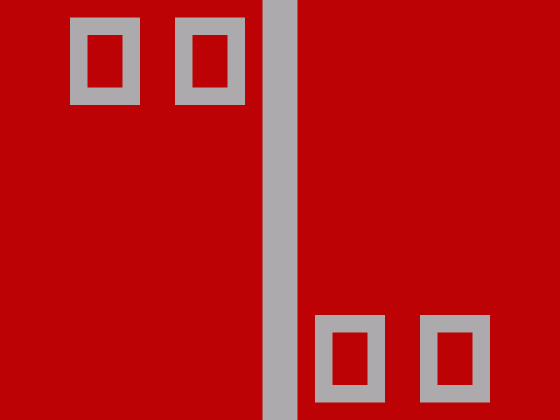
Your Sinclair
 1st January 2007
1st January 2007
Categories: Review: Software
Author: Colin Woodcock
Publisher: Weird Science Software
Machine: Spectrum 48K
Published in Your Sinclair #94
TV-Game
Is it the future or is it the past? Players unfamiliar with the Spectrum's limitations might consider TV Game to be a definite rewind down the videogame timeline. It is, after all, a version of Pong - a game hardly known for its bells and whistles.
Look more closely, whilst at least pretending to know a thing or two about our rubber-keyed friend (stroke your chin and nod thoughtfully), and you might notice that this particular implementation of Pong is rather cheeky. In fact, it shows blatant disregard for The Rules - The Rules being 1) you can't do anything in the Spectrum border other than change its colour, and 2) you can't display more than two colours per 8x8 character.
Before hardcore Speccy sceners set upon me with rolled-up copies of The Complete Spectrum ROM Disassembly, I should point out that The Rules aren't true at all if you're a Proper Machine Code Programmer. Plenty of games have given a one-fingered salute to the two-colour rule in their high-score tables, and a few have even strayed into the Border Zone from time to time (anybody remember the handlebars in Paperboy?). But these border effects were rarely a part of the gameplay and were nearly always static, whereas TV Game's multicoloured bats move up and down in the border quite merrily in response to your key presses, as though to do so is a trivial matter that no one ever thought of before.

TV Game's programmer has assured me that creating this game was anything but trivial. Papp Gyorgy became a Spectrum fan in 1983 when he saw Harrier Attack on his grandparents' machine. He made a number of subsequent attempts to learn machine code, but only got to grips with it in 2000 when his Speccy club decided to start writing new software. TV Game - originally intended as an entry into the 1K MiniGame Competition - was where he honed his skills. And those bats in the border caused him some major headaches.
Papp discovered, for example, that issue 2 and issue 3 Spectrums (Sinclair released several versions of the original 48K motherboard) behave slightly differently in their interrupt timings, producing significantly different results in the all-important border area. Hence the calibration screen you get once the game's loaded up, through which the game determines what issue Spectrum it's running on.
I said earlier that TV Game is a Pong clone - in fact, its inspiration was those plug-it-into-your-telly bat-and-ball games that appeared in Pong's wake. Boasting several games in one, all were identical, except that the playing area was red for tennis, green for football and white for hockey. The bat size changed too. Needless to say, this sort of genius was best appreciated with a) mates and b) several pints of lager. So it is too with TV Game, the implementation of which is flawless. There's no sound - impossible with all the border stuff going on - but a beep or two would have jollied things along nicely. Apart from this it does exactly what's promised on the tin.
So it's the future and the past - mixed up and sprinkled generously with irony. Which makes it a 21st-Century title in every respect.
A unique blend of state-of-the-art and state-of-the-ark. Best enjoyed with mates and beer.



